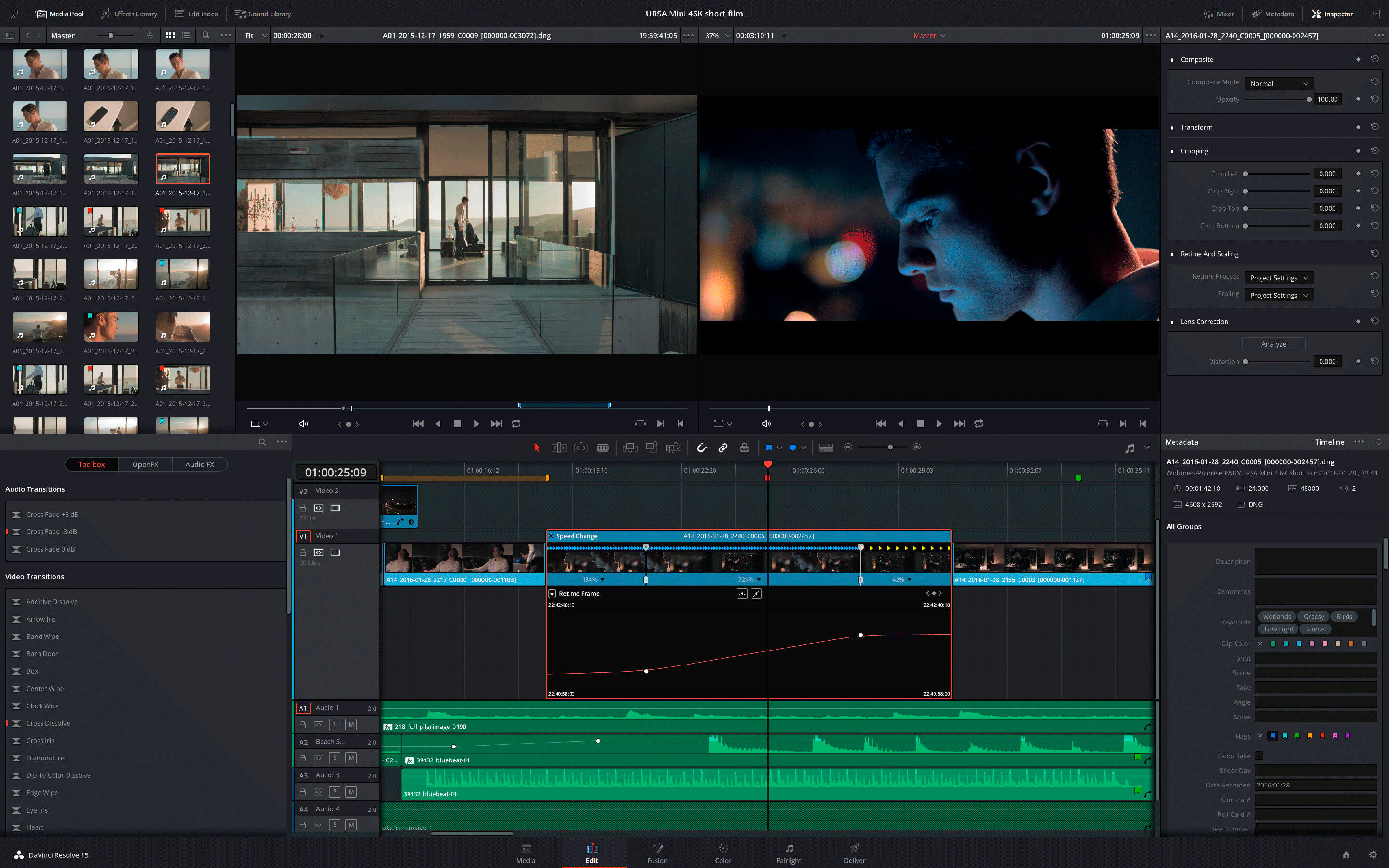

For experienced editors, video tutorials can help guide color correction with specific techniques, including altering the entire video’s color palette, altering just one item’s color (within your video), and more.įigure 3. As a novice editor, the visual color wheels and scope screens allow for experimentation (Figure 3).

One of DaVinci’s most impressive tools is its color editing. Annotated Edit screen showing Video, Title, Crop, and Transition elements. Cut screen default layout on a 13-inch MacBook Pro with one video imported.įigure 2. Previewing preset templates, adding transitions, and changing elements (such as duration, color, size, position, font) are all easy to customize (see Figure 2, showing these options in a sample Edit screen), allowing ensembles and soloists to brand their videos consistently across all platforms.įigure 1.

Although these functions will be fairly intuitive for most users, the workflow screens are visually dense, which can look intimidating (see Figure 1, which shows a Cut screen with only one video imported). These work with a visual “drag and drop” approach or by using familiar commands in the menu. Performing musicians will spend most of their time working in the Cut and Edit screens using these functions: titles, video and audio cuts and alignment, crop/transform, and video transitions. In each, you can edit elements of your current project, organized into “timelines.” These timelines can be component parts of your final video, different versions, or any sub-projects that use the same material. The program has seven workflow screens: Media, Cut, Edit, Fusion, Color, Fairlight, and Deliver. Users with minimal video editing experience can learn to use basic editing functions and experiment with higher-level editing processes with DaVinci Resolve’s free software. ĭaVinci Resolve is powerful video editing software that can be used to create polished videos by applied music instructors and college students alike. Free version or $295 for “Studio” with full functionality. System Requirements: 8GB system memory, 16GB if using Fusion (visual effects).


 0 kommentar(er)
0 kommentar(er)
